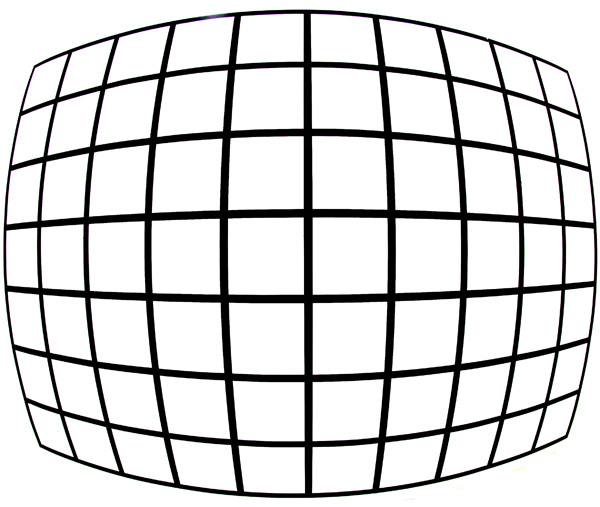|
Nikkor AF 10.5mm f/2.8G ED DX Fisheye - Review / Test Report - Analysis |
|
Lens Reviews -
Nikon / Nikkor (APS-C)
|
|
Page 2 of 3
Distortion
The fisheye effect of the Nikkor cannot be measured via the Imatest toolkit but the
reference image below should give you an idea about the degree of barrel distortion.
Remember that the lens is supposed to do just that. This is not a design problem.

The chart above has a real-world size of about 120x80cm.
Vignetting
Sorry - no vignetting figures this time. I'm absolutely clueless how to produce an evenly
lit plane for a lens with a field-of-view of 180 degrees ... 8-)
MTF (resolution)
Testing a fisheye lens is a bit experimental. The Imatest toolkit freaked out regarding
all the wild curves at the image borders and it was impossible to measure the "extreme
corners" for obvious reasons.
Keeping this in mind the Nikkor Fisheye produced very good results in the lab.
The center performance is already excellent at wide-open aperture and the borders follow
on very good levels. Stopping down produces only insignificantly better results.
Looking at the sample images below the extreme-most edges can be a bit soft.
Please note that the MTF results are not directly comparable across the different systems!
Below is a simplified summary of the formal findings. The chart shows line widths per picture height (LW/PH) which can be taken as a measure for sharpness.
If you want to know more about the MTF50 figures you may check out the corresponding Imatest Explanations
Chromatic Aberrations (CAs)
Lateral CAs (color shadows at harsh contrast transitions) are very pronounced and
easily visible in field images. The CAs can be as high as ~2px on the average
at the image borders. However, this is still a bit better than the only competing
lens - the Tokina 10-17mm AT-X DX Fisheye zoom.
Please note that lateral CAs are correctable via imaging tools.
Purple Fringing
The Nikkor can also show its share of purple fringing which cannot be removed as
easily as lateral CAs. Here's a 100% sample portion:

|